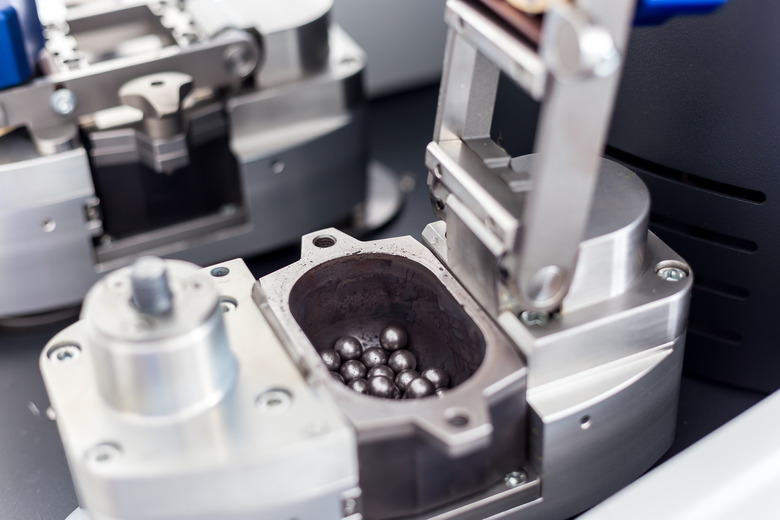Melting Points Of Metals Vs. Nonmetals
The melting point of an element is when it converts from solid form to a liquid. Metals, which are physically flexible elements that can conduct heat and electricity, tend to be solid at room temperature due to their relatively high melting points. Nonmetals, which are physically weak and poor conductors of heat and electricity, can be solid, liquid or gaseous, depending on the element. Melting points of both metals and nonmetals vary widely, but metals tend to melt at higher temperatures.
Melting Point Patterns
Melting Point Patterns
Once you include the melting points of all the elements on the periodic table, a pattern emerges. As you move from left to right on a period — a horizontal row –, the melting point of the elements start to increase, then they peak at Group 14 — the vertical column with carbon at the top — and finally they decrease as you approach the right-hand side. As you move from top to bottom on the table, the rise and fall pattern gets smaller, meaning that elements on lower periods have more similar melting points.
Types of Bonding That Increase Melting Point
Types of Bonding That Increase Melting Point
There are two types of bonding that lead to higher melting points: covalent and metallic. Covalent bonds are when electron pairs are shared equally between atoms, and they pull atoms even closer together if multiple pairs of electrons are involved. Metallic bonds involve electrons that are delocalized: they float between many atoms, not just two, and positively charged nuclei are firmly bound to the surrounding "sea" of electrons.
What Lowers the Melting Point
What Lowers the Melting Point
As strong bonds between atoms give elements higher melting points, it is also true that lower melting points are a result of weaker bonds or a lack of bonds between atoms. Mercury, the metal with the lowest melting point — -38.9 degrees Celsius or -37.9 degrees Fahrenheit — cannot form any bonds since it has zero electron affinity. A lot of nonmetals, like oxygen and chlorine are highly electronegative: they have high affinity for electrons and effectively pry them from the other atom, so the bond breaks easily. As a result, these nonmetals have subzero melting point temperatures.
Refractory Metals
Refractory Metals
Although many metals have high melting points, there is a select group of a few elements that have exceptionally high melting points and are physically strong. These are refractory metals, or metals with a melting point of at least 2,000 degrees Celsius, or 3,632 degrees Fahrenheit. As a result of their tolerance to heat, they are used in a variety of equipment, from microelectronics to rockets. For example, the metals tungsten and molybdenum are being considered for building material at power plants because of their exceptionally high melting points that allow enormous heat resistance.
References
- Georgia State University HyperPhysics: Metals and Nonmetals
- Royal Society Of Chemistry: Patterns In The Periodic Table
- Royal Society Of Chemistry Periodic Table: Carbon
- ChemGuide: Metallic Bonding
- Royal Society Of Chemistry Periodic Table: Mercury
- Wolfram Research ElementData: Elements Listed By Melting Point
Cite This Article
MLA
Auerbach, Scott. "Melting Points Of Metals Vs. Nonmetals" sciencing.com, https://www.sciencing.com/melting-points-metals-vs-nonmetals-9198/. 30 April 2018.
APA
Auerbach, Scott. (2018, April 30). Melting Points Of Metals Vs. Nonmetals. sciencing.com. Retrieved from https://www.sciencing.com/melting-points-metals-vs-nonmetals-9198/
Chicago
Auerbach, Scott. Melting Points Of Metals Vs. Nonmetals last modified March 24, 2022. https://www.sciencing.com/melting-points-metals-vs-nonmetals-9198/
